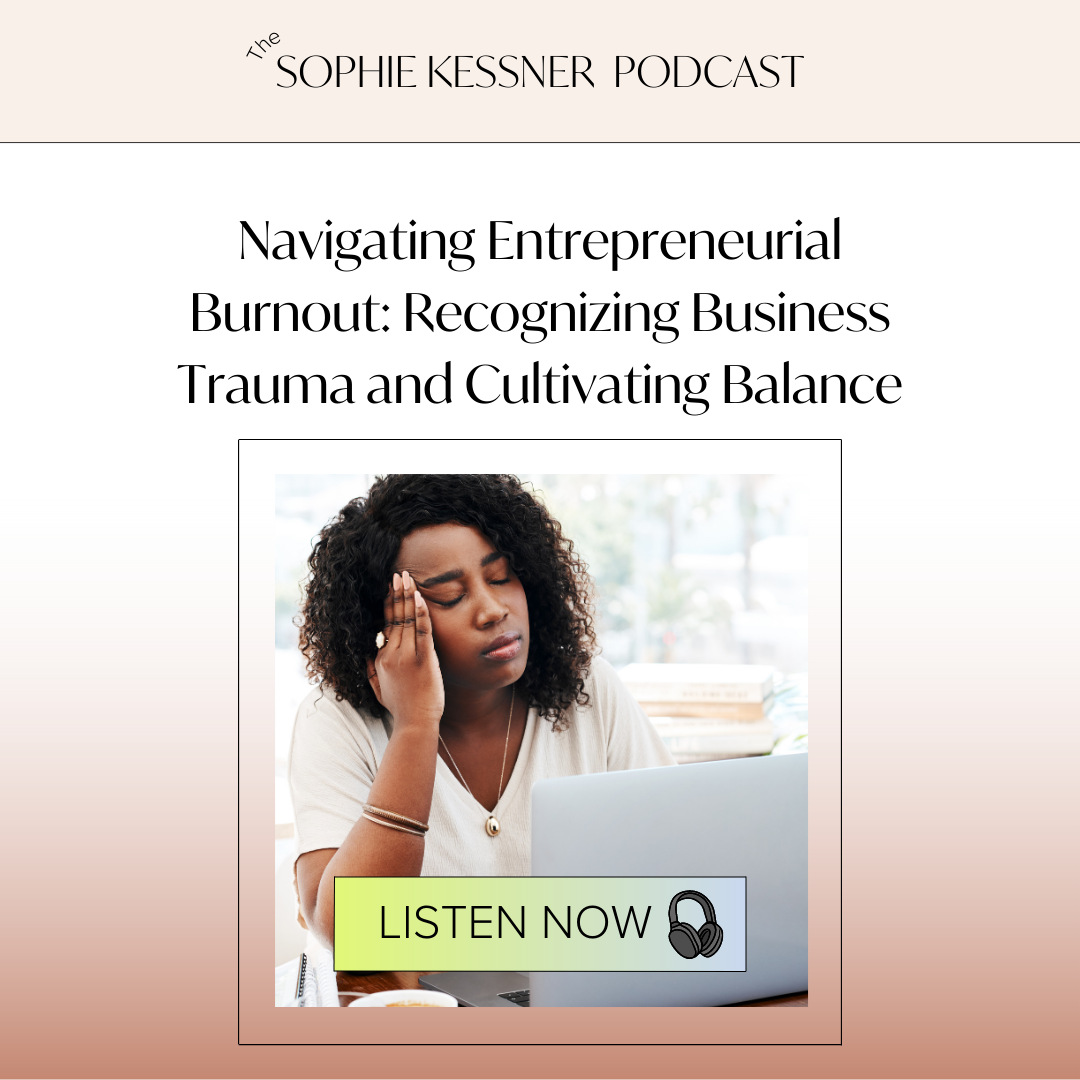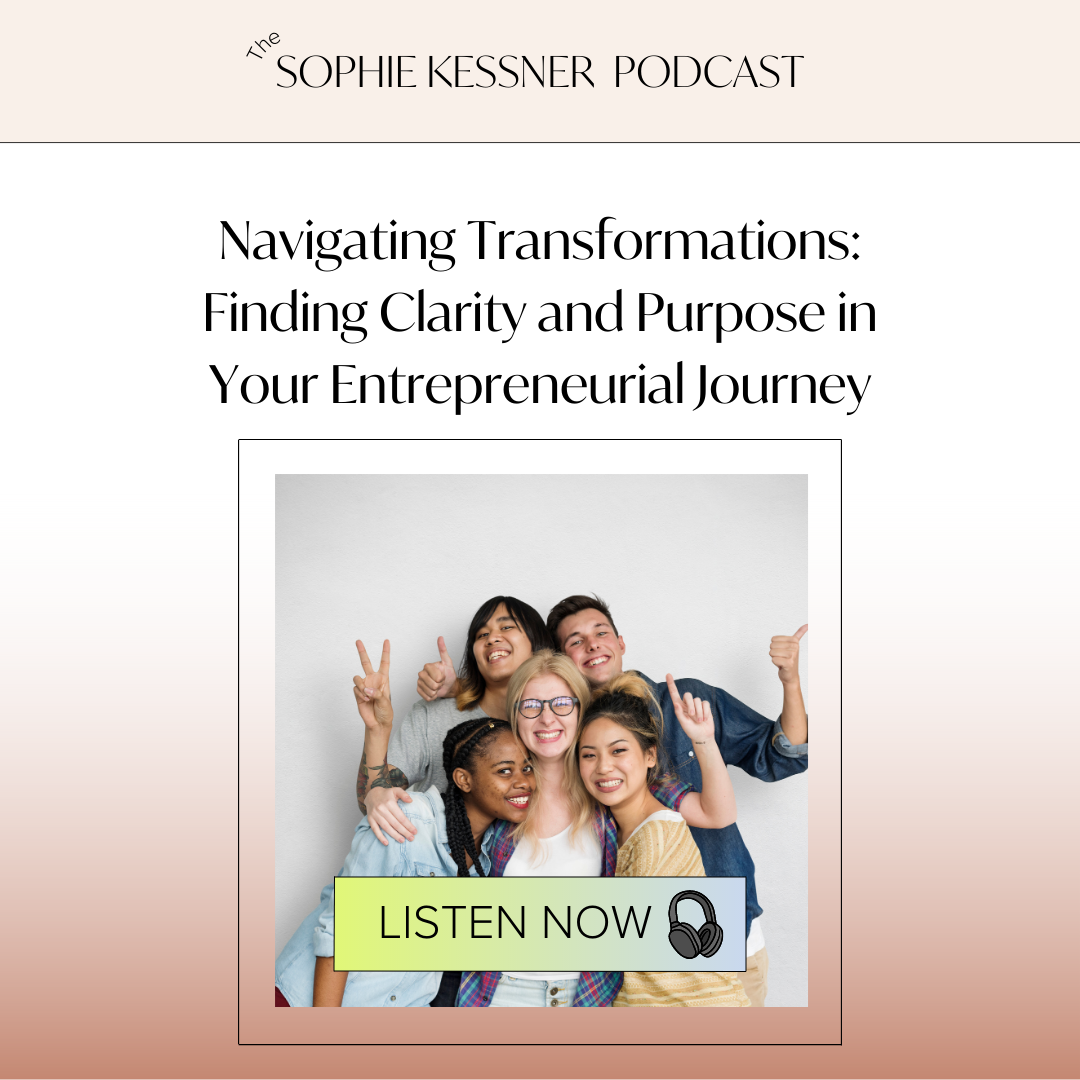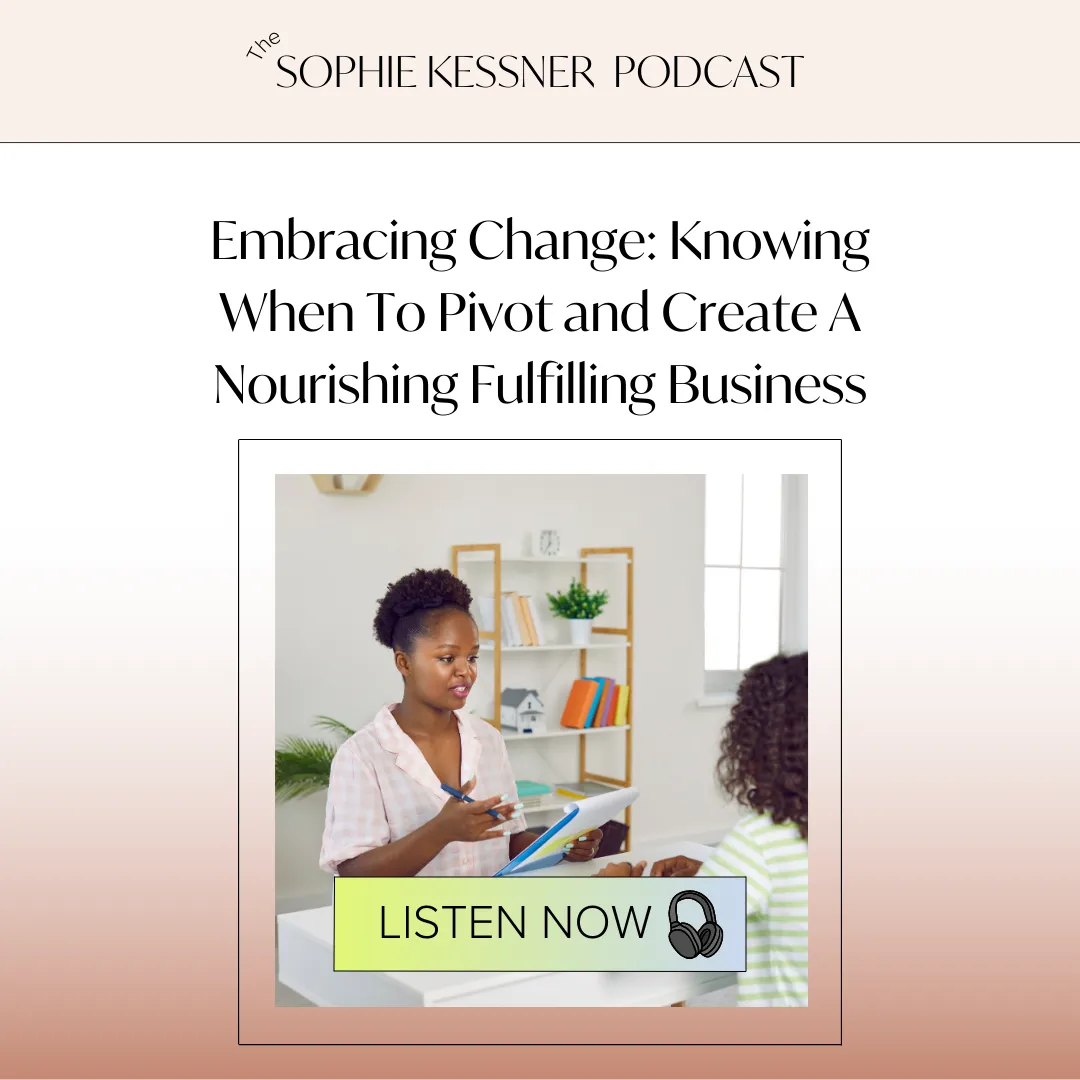In this episode, we explore the impact and intentionality of various business models for creating money online. We discuss the pros and cons of the launch model, which can be beneficial with its clear, determined seasons for marketing and client delivery, but it can also be problematic in that it creates a high dependency on needing to close a lot of sales and a lot of cash within a very short period of time. Listen in as we consider the importance of having both launches and evergreen offers to create financial stability and a financial rhythm that supports your life and business.
We also emphasize the importance of financial literacy and responsibility when it comes to understanding business expenses, profit and loss, and taxes. Developing financial literacy and being mindful of what is happening in your business to make informed, wise decisions is key. Listen as we discuss the importance of owner’s pay, which is an expense for the business and must be taxed, and how your earnings should be calculated after taxes. We also highlight the need to be aware of increasing expenses and the risk of making negligent decisions if the focus is just on launching and making more money without understanding the financials.
Lastly, we dive into the details of financial literacy and living within our means. We examine the effects of increasing our expenses as we earn more and how that impacts our profit margin. Listen in as we talk about budgeting, being aware of our debt, and looking at our basic living expenses to calculate our bare minimum salary needed to stay financially stable. Join us in this episode as we unpack the importance of financial literacy and understanding how to structure businesses for sustained success and growth.
HOW TO BUILD A PROFITABLE BUSINESS AND UNDERSTAND YOUR NUMBERS
Have you been contemplating which business model makes the most sense for you when it comes to the Launch Model and Evergreen Marketing? In this blog, we’ll break down the pros and cons to each business model and help you better understand the numbers that make up your business so you can make financially smart decisions about how you grow and scale your company.
THE LAUNCH MODEL
One of the most popular business models in the online space is launching. This model can be summarized as an open cart close cart strategy where the business is actively enrolling for an offer during a set period of time (launch time) and generates all the sales and revenue during the launch window. After the launch date passes, the cart closes and folks are no longer able to purchase the product or service.
Pros: Launch models support more compartmentalized businesses where you only have to focus on one area at a time. During launch mode, all energy and resources are dedicated to sales, marketing, and enrollment initiatives which creates a general sense of hype and build-up.
They also have a natural built-in sense of urgency with a legitimate close cart date for when enrollment will no longer be open. Once the cart closes, the only focus is client delivery until the next launch period starts.
Because cohorts start together, there tends to be a greater sense of camaraderie between members that aren’t always available in self-paced courses.
Cons: There’s an immense amount of pressure that comes with having to generate all your revenue within a small window of time which can be stressful for novice business owners who’ve yet to build a name for themselves. If a launch doesn’t go as well as planned, it can create a real sense of financial scarcity and demand the business owner to innovate new ideas to supplement income temporarily.
Clients who may want to enroll during the off-season will have to wait for an entire client delivery cycle before they can enroll in the next cohort which may leave them less likely to join future rounds.
EVERGREEN MODEL
The evergreen business model takes a different approach to online programs and services where it’s open for enrollment year-round. This means there’s no hard start or stop date for clients to begin or end and allows for clients to join at any time.
Pros: The evergreen business supports more paced growth where your cash flow isn’t subject to a small window of time during a portion of the year, but rather allows you to continuously generate revenue year round and helps to alleviate the pressure of launches.
Clients can join whenever they are financially ready and don’t need to stick to a strict schedule. The business owner also gets to set a different pace for the program that allows the clients to move through at their own rate instead of having to finish within an allocated timeframe.
You can focus on more evergreen marketing that allows you to batch content ahead of time and build long-term assets that are working for you year-round instead of a big push during your marketing season.
Cons: Because there’s no natural sense of urgency incorporated into an evergreen offer that’s open year-round, you’ll need to create alternative deadlines for folks who are ready to jump into your program. You’ll also have to work on continuously marketing your offer and giving it a “fresh” feeling in order to keep folks interested. Some people may also find the lack of exclusivity unappealing, since there’s no specific limited window to take advantage of the offer.
The key is to use evergreen offerings as part of a larger strategy for success and to consider the pros and cons carefully before committing. With thoughtful execution, evergreen offers can be a great addition to your business model!
WHICH MODEL MAKES SENSE FOR ME?
There’s no right or wrong way to do business, there’s just what’s right for you, right now. One unavoidable component of the business is any time you launch something new, you will inevitably have to “launch” the offer for the first time to get it off the ground; BUT once you’ve proven the concept and have client results rolling in, it offers a new found freedom to slowly transition into an evergreen approach if that’s something you desire to do.
We encourage clients to supplement income accordingly while they are optimizing their evergreen business model with private clients or alternative income from a full or part-time job so they can build and test the different assets of their business without the financial pressure to get it all right the first time.
You can read more about the Evergreen Model Versus Launch Model and previous blogs I’ve written here: https://sassandseo.com/launch-marketing-vs-evergreen-marketing/
DEVELOP YOUR FINANCIAL LITERACY
If you want to build a profitable business, you need to develop your financial literacy. This means understanding business expenditure, profit and loss, taxes, and more. If you’re financially naive or oblivious, you’ll struggle to make informed decisions and end up making risky financial choices.
1. Calculate Your Monthly Operational Costs
Operational costs have to do with all expenses that relate to the business remaining operational. This includes things like software fees, monthly subscriptions you use, team members that you pay, office spaces that you rent, internet bills and any other reasonable expenses that can be allocated as a business expense.
The best way to approach calculating your monthly operational cost is to review your last three months of expenses and allocate your expenses accordingly to find out how much you’re spending on each category:
- Team
- Utilities
- Office Supplies
- Office Rent
- Software
- Contractors
- Marketing
- Sales Commission
When you’ve collected all of your answers, you’ll add these numbers together to get your baseline monthly operational cost for the business and are ready to move to step two.
2. Calculate Your Owner’s Pay
Next, you’ll want to calculate your owner’s pay. This is the amount you pay yourself as the owner of the business. Your owner’s pay should be based on your bare minimum living expenses, such as rent, food, gas, and groceries.
If you’re unsure of what your monthly expenses are for your personal life, we recommend reviewing your last three months of financial statements and allocating all of your expenditure that can be categorized as personal expenses.
This can also include things like child care, health insurance, and other personal expenses not covered by the business. If you find that your expenses fluctuate month to month, average out what the medium total is for the last three months and use this as your baseline.
If you also want to calculate building your savings account into your owner’s pay, you can have a category for savings with the total amount you’d like to put away towards savings each month.
Once you have what your total cost of living is each month in addition to the money you’d like to be saving every month, you’ve now calculated your monthly owner’s pay and can add this to your business operational cost for what the business pays you each month.
For example, business operational costs are $1200/month but your owner’s pay is an additional $3000/month which means the total business operational costs including owner’s pay is $4200/month.
3. Understand Your Profit Margins
The biggest misconception for novice business owners is that all the money the generate in sales is actual profit but this couldn’t be further from the truth. Your profit is what is left over AFTER all of your expenses are paid, including your owner’s pay and is important to help you discern if your business is operating at a healthy profit margin.
Your profit margin is the percentage of total money left over as profit every single month. For example, if your business generated $100,000 in sales for the year and you pay yourself $36,000 a year as part of your “owner’s pay”, you’ll deduct that from your business’s total revenue.
This means your business is not generating $100,000 in profit, but closer to $64,000. We also need to calculate the other business expenses from your monthly operational costs that will continue to eat into the business’s profitability. Right now, a business generates $100,000 in revenue (cash collected) but pays the owner $36,000 at a 64% profit margin.
We also want to take into consideration the taxes that will need to be paid on the profit which will decrease your total take-home cash, if you generate $64,000 in profit and pay a 25% tax fee on all sales, your actual profit margin is closer to 48% with $16,000 allocated for taxes and a remaining balance of $48,000 left in business profit.
When you can begin to understand profit margins, you can start to look at business differently and aim to have a healthy profit margin that you can scale. If your business is currently generating below a 40% profit margin, it’s crucial to consider how you can increase your profitability before going to scale.
You calculate your profit margin by dividing your PROFIT by your REVENUE: Profit Margin = Profit / Revenue
Control Your Expenses
One common mistake business owners make is increasing their expenses as they earn more money. They reinvest their profits without taking the time to understand their numbers, resulting in shrinking profit margins. To avoid this, control your expenses and don’t invest in a certain lifestyle to portray an image of success. If you’re paying more for mentors, continuing education, or a higher cost of living, make sure it’s within your budget and won’t hurt your profit margins.
Set Realistic Goals
To build a profitable business, you need to set realistic goals. If your business is only generating enough revenue to cover your basic living expenses, it’s not profitable. Make sure you know your bare minimum salary for yourself or your owner’s pay every month and every year. If you want to live in a financially stable place, at the bare minimum, you need to earn that amount.
Building a profitable business and achieving financial freedom is possible if you take the time to understand your numbers and develop your financial literacy. Control your expenses and set realistic goals to avoid risky financial decisions. Use these tips to build a profitable business that can support you in the long run.
Episode Keywords:
Online Business, Financial Literacy, Launch Model, Evergreen Offers, Balanced Financial Rhythm, Profit and Loss, Taxes, Owner’s Pay, Expenses, Profit Margin, Budgeting, Debt, Basic Living Expenses, Bare Minimum Salary, Financial Stability, Sustained Success, Savings, Business Numbers












